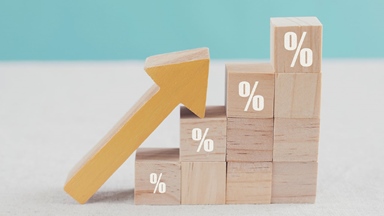At a glance
For the first time in years, inflation rates are on the move. In the US, prices jumped 8.5 per cent on the year in March; meanwhile, in countries with less stable economies, such as Turkey and Argentina, they’ve surged above 50 per cent. Despite Australia’s annual inflation rate currently sitting well below many of its peers, it recently jumped to a 20-year high of 5.1 per cent – substantially exceeding the target range of two to three per cent.
Though the ongoing Russia-Ukraine conflict has contributed to soaring commodity prices – having disrupted supply chains already shaken by the pandemic – economists have been predicting the reappearance of inflation for some time, says Michael Judge, head of Australia and New Zealand at global money transfer specialist, OFX. “It’s been the missing part of the economic puzzle for a number of years,” he says. “Even before COVID-19, we were poised to see tighter monetary settings globally and a return of inflation.”
The interest rate/exchange rate connection
With many countries experiencing their highest inflation rates in decades, global central banks are responding in earnest, with the Bank of Canada (BOC), Reserve Bank of New Zealand (RBNZ), Bank of England (BOE) and US Federal Reserve among those already lifting interest rates in an attempt to control the situation. Even the Reserve Bank of Australia (RBA) has reversed its decision to remain ‘patient’, having this month hiked interest rates for the first time in more than 11 years.
According to Rachael Tallott, account manager at OFX, countries that respond aggressively to inflation by lifting interest rates will likely see their domestic currency appreciate, compared to those that keep rates low. “Commonly, a rate increase will cause a currency to appreciate against lower counterparties, which will attract foreign capital investment and gain a better return,” she says. “Therefore a 50 basis points jump on interest rates by the RBA should see the AUD increase in value due to rise in demand.”
While Tallott suggests that the higher dollar will put more money in Australians’ back pockets when it comes to a US investment or the next European holiday, for local businesses that sell globally, it will likely have a detrimental impact, as higher exports will drive importers to look elsewhere for lower-priced goods.
Creating greater certainty in an uncertain environment
Global interest rates have remained on a fairly even plane in recent years, removing a lot of the impetus that they would typically give an exchange rate; however, Judge expects this to change as interest rates around the world start to move at different paces. “We're going to see a breakdown of this global alignment of interest rates and a lot more liquidity, heightened levels of volatility and distortion in that natural equilibrium playing out,” he says.
Predicting currency rates is practically impossible at the best of times, let alone in the current climate, but for anyone needing to move money globally, there are tools available to help mitigate risk. Forward contracts, for example, allow you to transfer money in the future at an agreed-upon exchange rate, giving you greater clarity on costs and allowing you to hedge against future rate changes.
Given the unpredictability of today’s market, Australians wanting to invest globally or repatriate funds may benefit from the support of a currency specialist, who can alleviate some of the anxiety and complexity that such transactions often entail. “There are a lot of risks, particularly at these types of moments, of getting things wrong,” Judge says. “The role that a specialist plays isn't just around maximising your exchange rate outcomes or catching a heightened market; it’s ensuring that nasty surprises are avoided.”
To access more expert commentary from OFX, download this one-page currency outlook guide, which outlines the key drivers and important events that could impact the major currencies (AUD, USD, GBP, EUR, CAD, NZD, SGD and HKD) in May.


